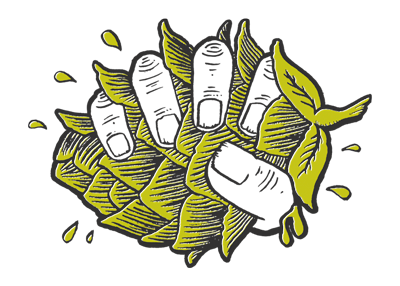Welcome to the Splinter Cellar,
our wood-aging dream space
Back in 2010, brothers Chris and John Trogner were sketching their vision for a new brewery on the back of a napkin. If you’ve been to Tröegs, you know what they came up with: a large central Tasting Room, an open brewhouse, a self-guided tour path around a Quality Control lab, plenty of room for fermentation and a General Store for beer and goods to-go.
They also pictured a space dedicated to wood-aging. It would be a sanctuary for strong ageable ales, a home for wild yeast and bacteria, and a wide-open canvas for creative cellaring. From this space would grow a new series of Pennsylvania wild ales brewed with the fruit and microflora from our backyard.
Over the years we’ve given a home to nearly 300 wine, bourbon and virgin oak barrels, as well as three small oak tanks called foeders, but the dedicated wood-aging space kept getting shelved for another day.
That day has arrived. In a corner of the brewery that once housed four loading docks and some forgotten kitchen equipment, we’ve built our wood-aging dream space.
The First Steps
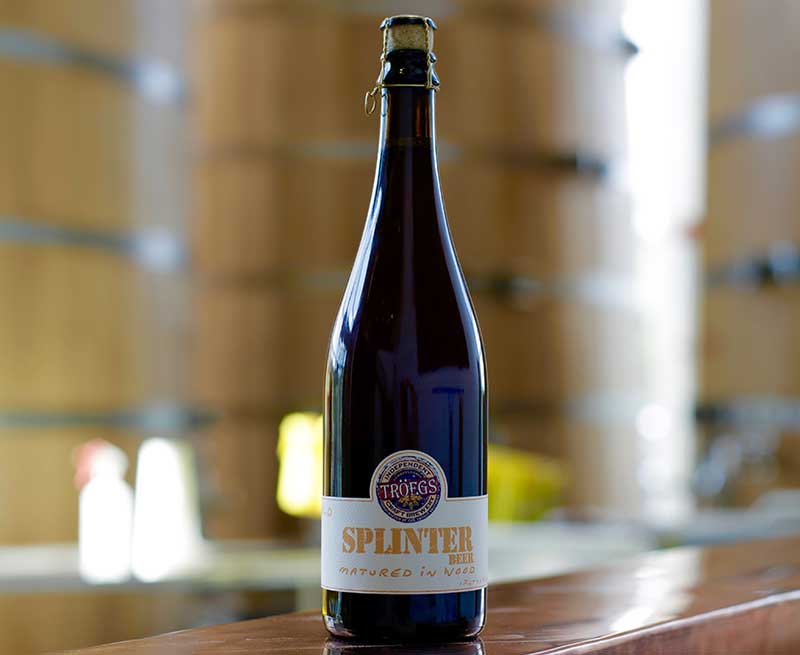
The first beer we aged on wood was born from a little inspiration, a lot of perspiration and no small amount of luck.
About a decade ago, John Trogner got an unlabeled bottle of raspberry sour from friend and fellow brewer Dan Weirback, and it got his wheels turning. Before long, he was hunting down oak barrels and figuring out what to put in them.
“Weyerbacher was a brewery up the road, just like us, and they tried something funky,” says John. “We thought, ‘Wow, we like funk. We like fruit. Let’s put some beer in oak and make it funky.’ ”
The Scratch Series had just launched, and Scratch #3, a Belgian-style triple that eventually became LaGrave, seemed like the right choice. It was crisp, fruity and highly carbonated. A kissing cousin of champagne.
After a year or so in Pennsylvania oak, we hand-corked a few bottles to test the concept.
“Those first couple bottles turned out great,” says John. “Picture LaGrave – a little pear, a little apricot, champagne-like carbonation, then add a little toasted coconut, a touch of vanilla. Not super-sour, but a nice undertone of hay.”
We called it Splinter Gold, and you could say that was the first step in the winding path that’s led to the Splinter Cellar.
The Foeders
Back before stainless steel, pretty much all beer was fermented, stored and transported in containers made of wood. These days, brewers age on wood to add unique layers of flavor and aroma from the wood’s previous tenant or from the wood itself.
At the heart of the Splinter Cellar are three 20-foot-tall oak foeders built by Giobatta & Piero Garbellotto, a 200-year-old Italian barrel manufacturer. Each foeder – a Dutch word for large oak tank – is made of dozens of staves of Italian, Hungarian and French oak that have been air dried for three years to mellow any harsh flavors.
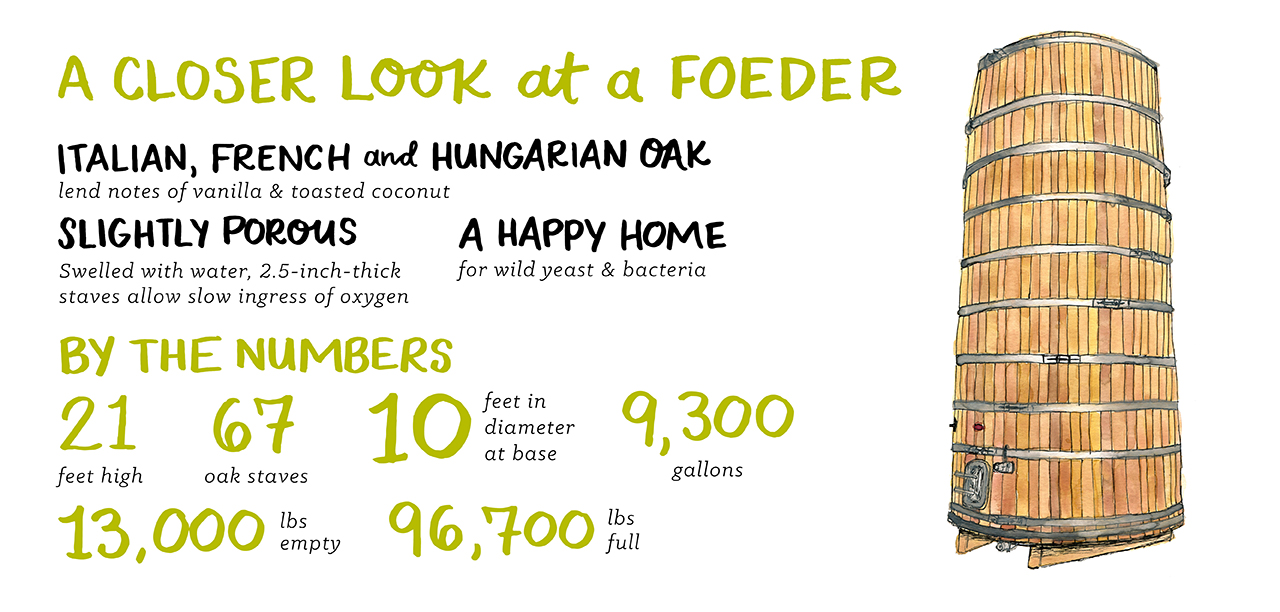
Inside the foeders, a delicate dance of liquid, solid, air and microcultures takes a simple – or not so simple – beer and turns it into something different altogether.
For starters, beers aged in foeders pull undercurrents of vanilla and toasted coconut from the oak. But the wood tanks also provide a happy home for wild yeast and bacteria, things typically not welcome in a brewery, and the slightly porous wood allows a steady creep of oxygen that keeps the microflora hard at work. Secondary fermentation with brettanomyces, pediococcus and lactobacillus gives wild ales their sour, funky, acidic flavors.
Wild Elf
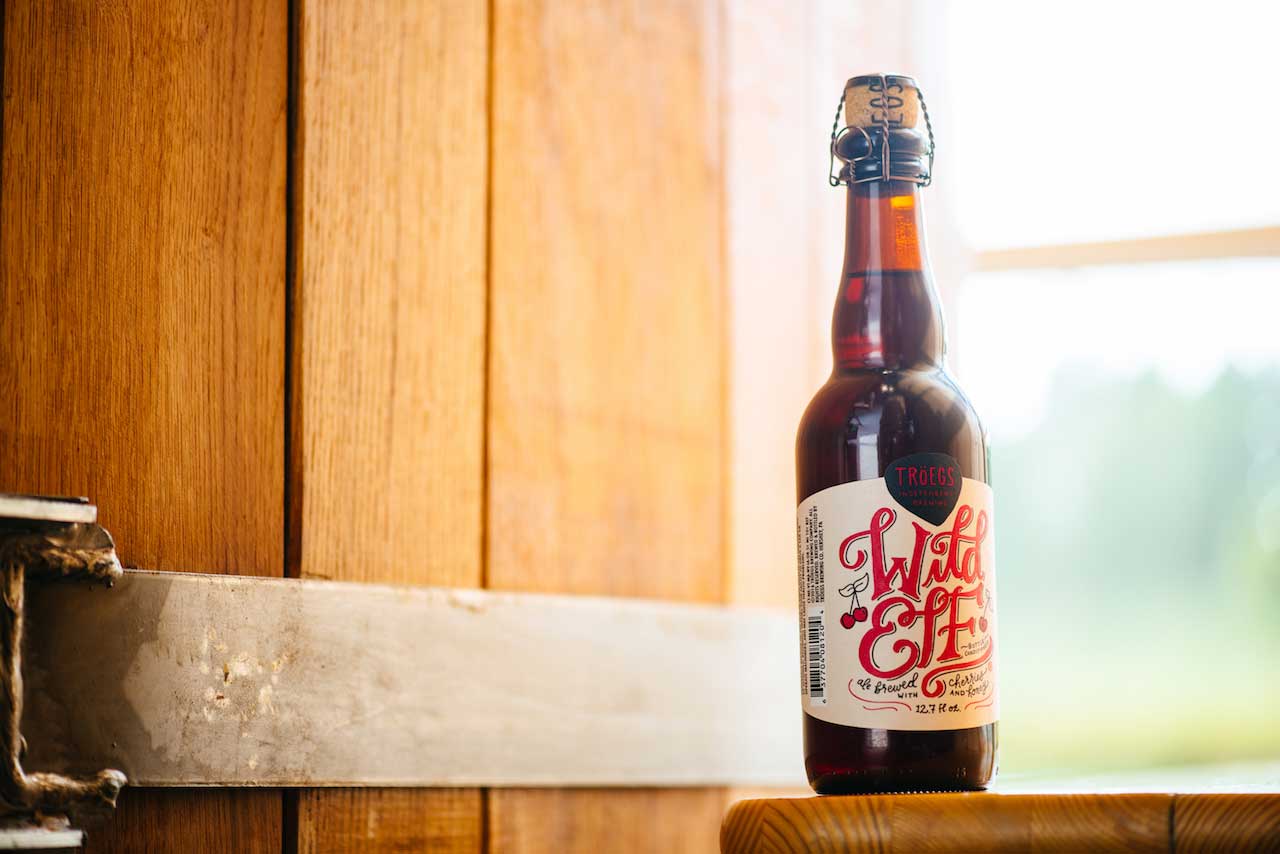
To celebrate the opening of the Splinter Cellar in July of 2016, we released a limited amount of our Splinter Series beer Wild Elf in select markets. Born from our once-a-year holiday favorite Mad Elf, Wild Elf goes through a year-long secondary fermentation in oak with locally harvested Balaton cherries and the wild microflora that rode in on them. Tart, layered and highly carbonated, Wild Elf is a beer rooted in our backyard.
The art of Wild Elf is in the character of the local cherries and the thoughtful blend of oak-aged Mad Elf.
About a year before the beer was released, a few of our brewers went on a cherry-tasting trip to nearby Peters Orchards in Adams County, known to many as Pennsylvania’s Fruit Belt. As they tasted tangy Balaton cherries, visions of a new sour Splinter Beer started taking shape. Back at the brewery, they filled a small foeder with Mad Elf, a bumper crop of cherries and the wild yeast and bacteria hitchhiking on their skins.
About 10 months later, the beer was bursting with notes of cherry pie and the classic fruitiness and funk of brettanomyces. But there are even more moving parts to Wild Elf.
“Since 2010, back when our brewery was still in Harrisburg, we’ve been squirreling away Mad Elf in oak barrels, and each one has developed differently,” says John Trogner. “Some have notes of toasted vanilla and coconut, others are dominated by a sour acidity, and the oldest are rich with deep, raisiny stone fruit.”
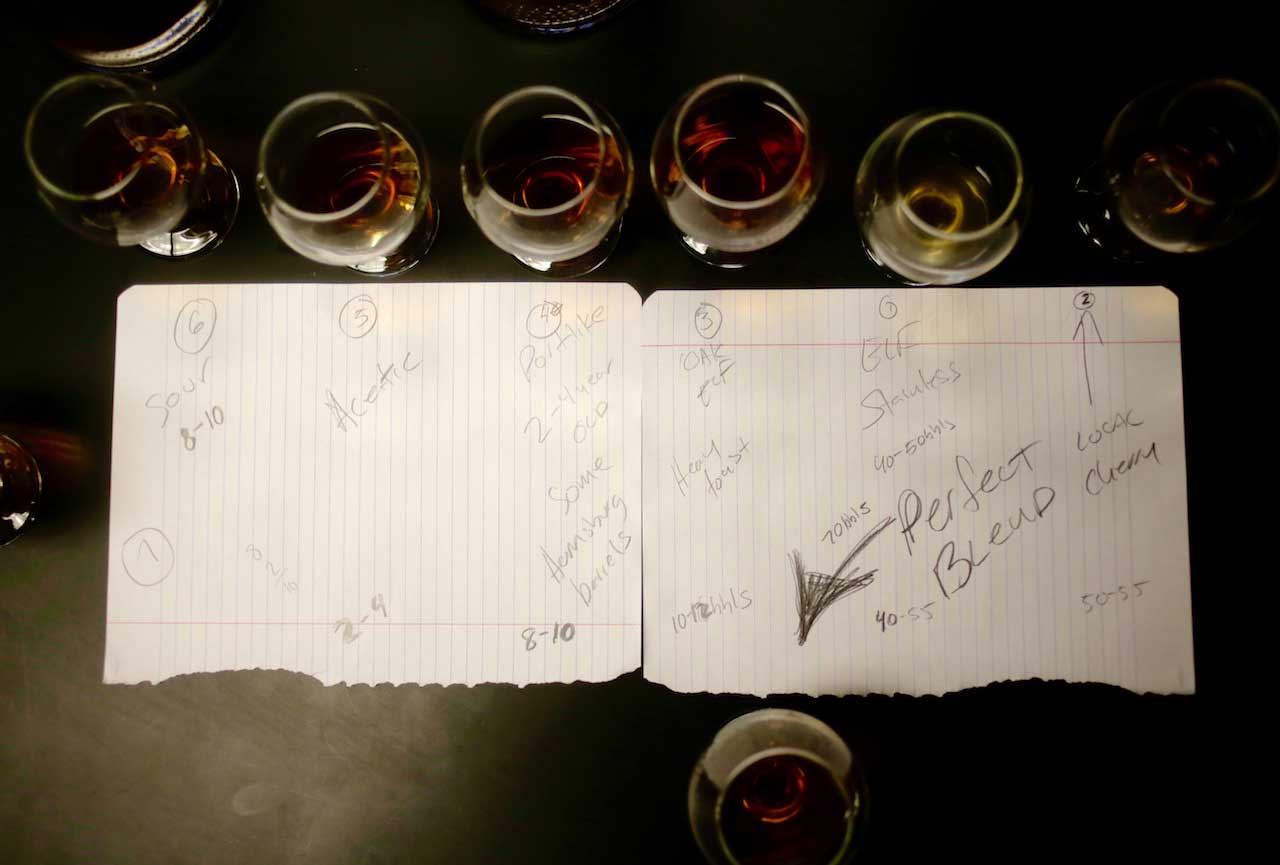
In early spring, our Blending Squad gathered around a table full of tasting glasses and bounced ideas off each other – How about some port character from this barrel? And some sour acidity from that one? – until they settled on a perfect blend. Soon after, it was packaged in 375-ml cork-and-cage bottles for its third and final fermentation.
Ripe cherries are the centerpiece of Wild Elf, with a rich depth of character layered in. You’ll find notes of esthery fruit and subtle funk from the brettanomyces, a slight allspice character from the Balaton cherries and sour lemon from lactobacillus. Our oldest vintages add notes of raisin and stone fruit. We left the pits in the cherries for a touch of almond, and the oak barrels add an undercurrent of vanilla and toasted coconut.
On the Horizon
As we add more barrels and our new foeders start producing, we’ll be able to get more American wild ales and Splinter Series beers like Barrel-Aged Troegenator, Nebulous and Impending Descent to bottleshops, bars and restaurants where Tröegs is sold.
Art Of TRÖEGS Gallery
For many years, through our annual Art of Tröegs Contest, we’ve challenged Tröegs fans who share our creative spirit to take our packaging and create their own original works of art. Now, we have a place to showcase our very favorites.
“We thought it would be nice to have a place where we could show off the art that bubbles up around the brewery,” says Chris Trogner. “Especially all the great work we get for the Art of Tröegs Contest.”
Above the Splinter Cellar is our Art of Tröegs Gallery, where you’ll find winners and fan favorites from past years, as well as pieces we commissioned from artists up and down the East Coast.
Included in the exhibit are 2017 contest winner from Virginia Marni Manning’s “Renaissance of Beer” painting featuring co-founders Chris and John Trogner in a whimsical renaissance setting; custom bottle artwork from PA artist Jake Bullock; a pair Nike Dunks with a tailored upper made of our beer labels from NJ artist (and 2016 contest winner) Brian Begley; and a broken glass and cement mosaic from larger-than-life Philadelphia artist Isaiah Zagar.
Exhibits in the Art of Tröegs gallery will rotate regularly.
So, whether you’re a regular or have never been to Tröegs, it’s time for a visit. Check out our hours, beer list, Snack Bar menu and tour information and start planning your trip.
